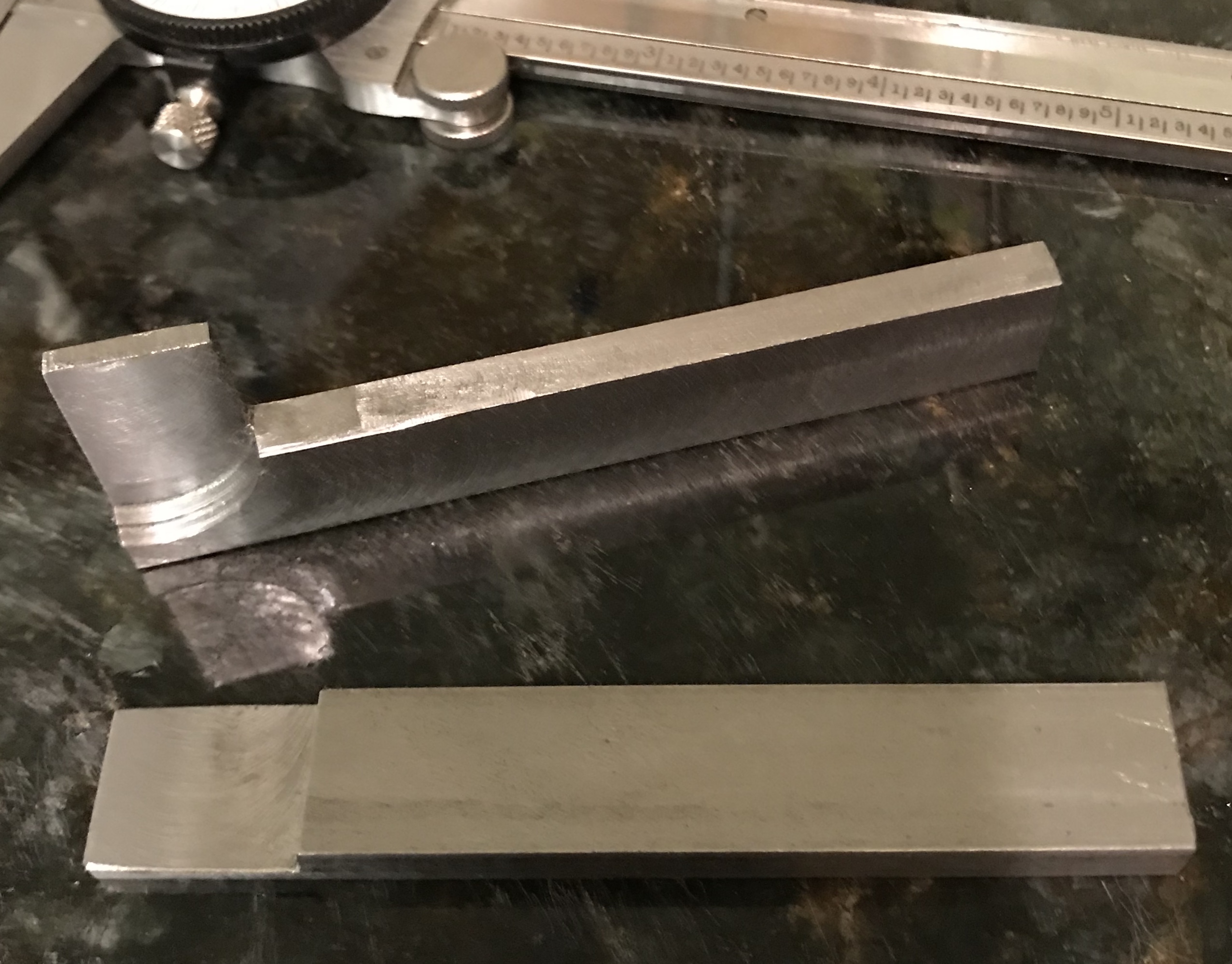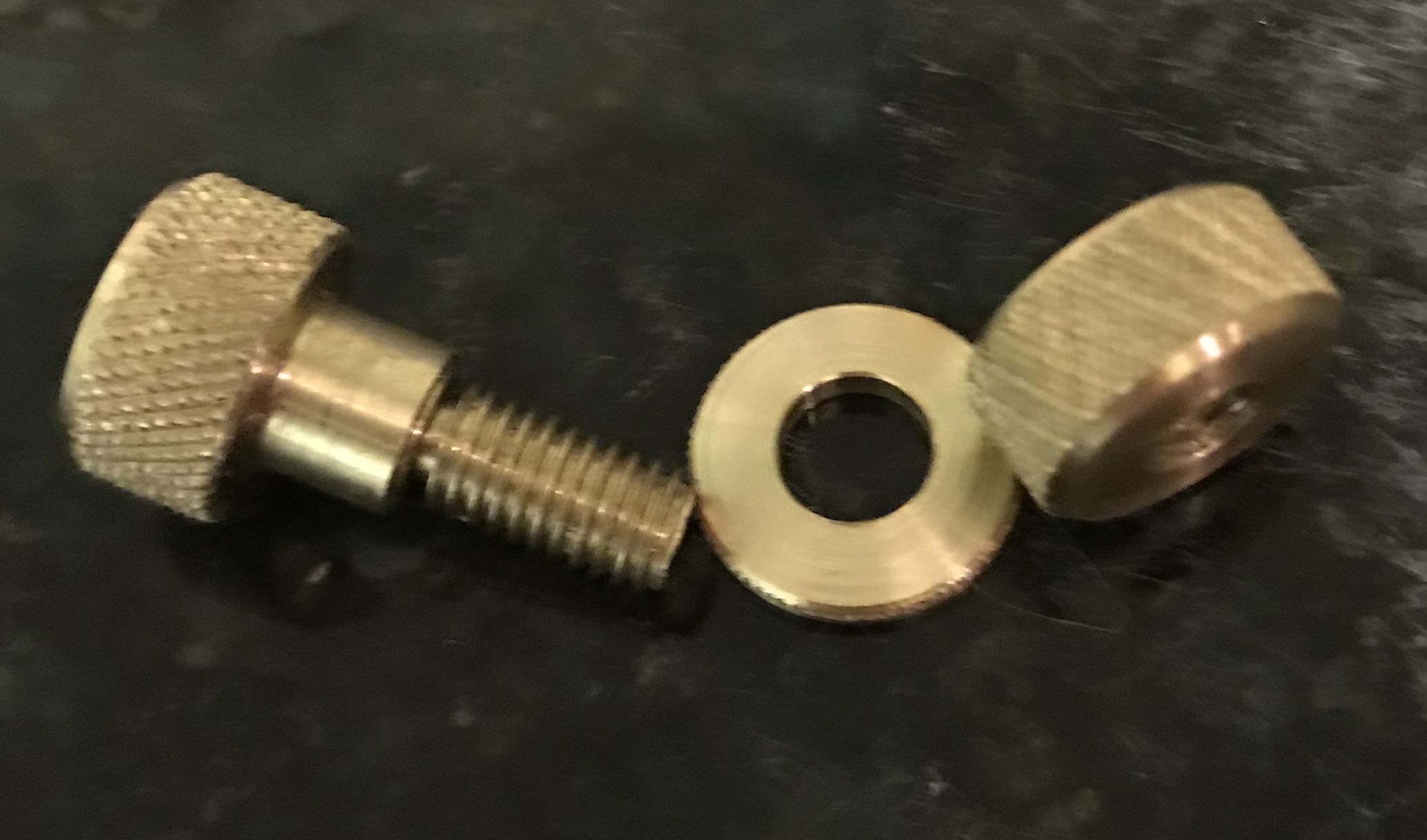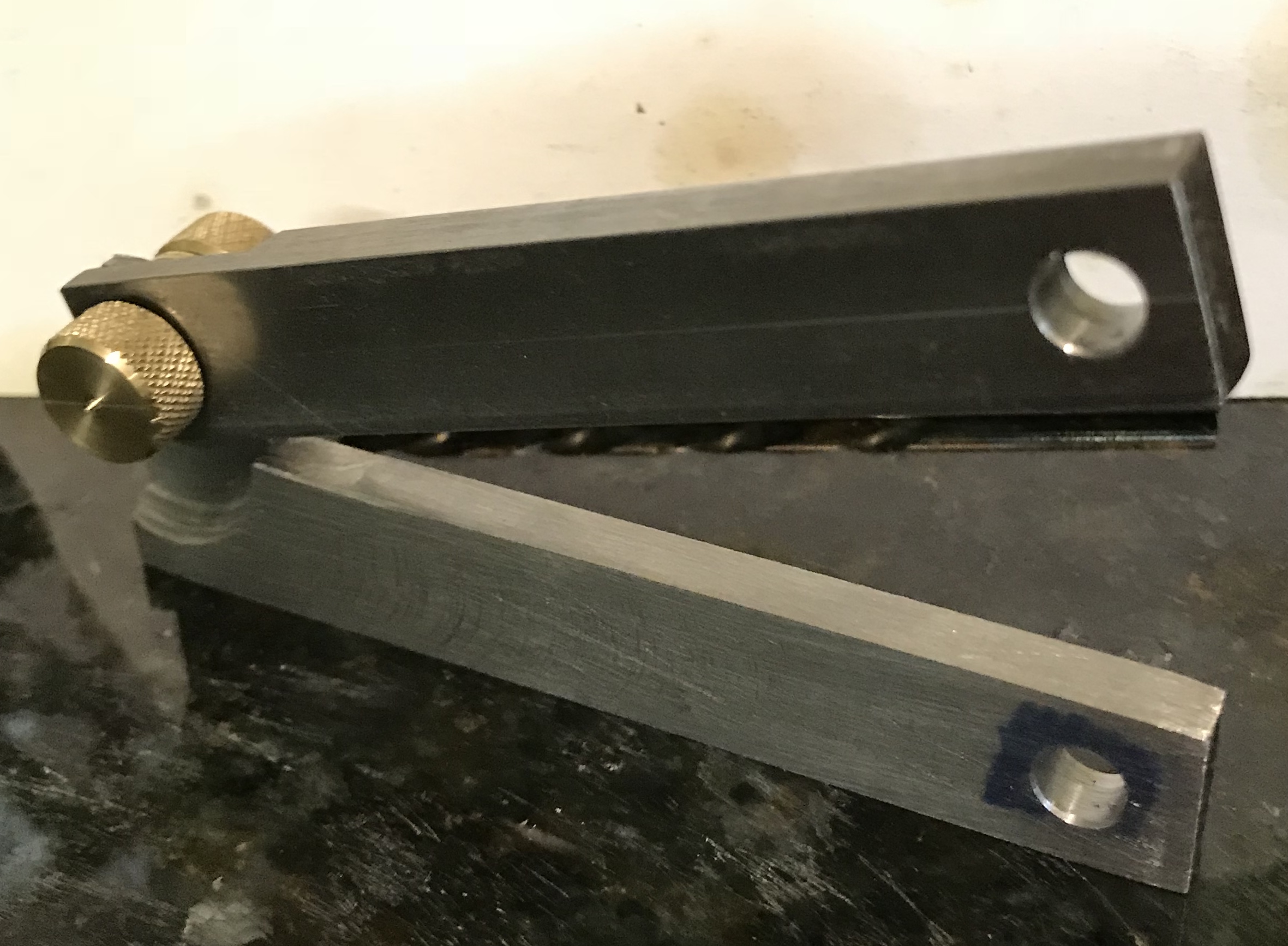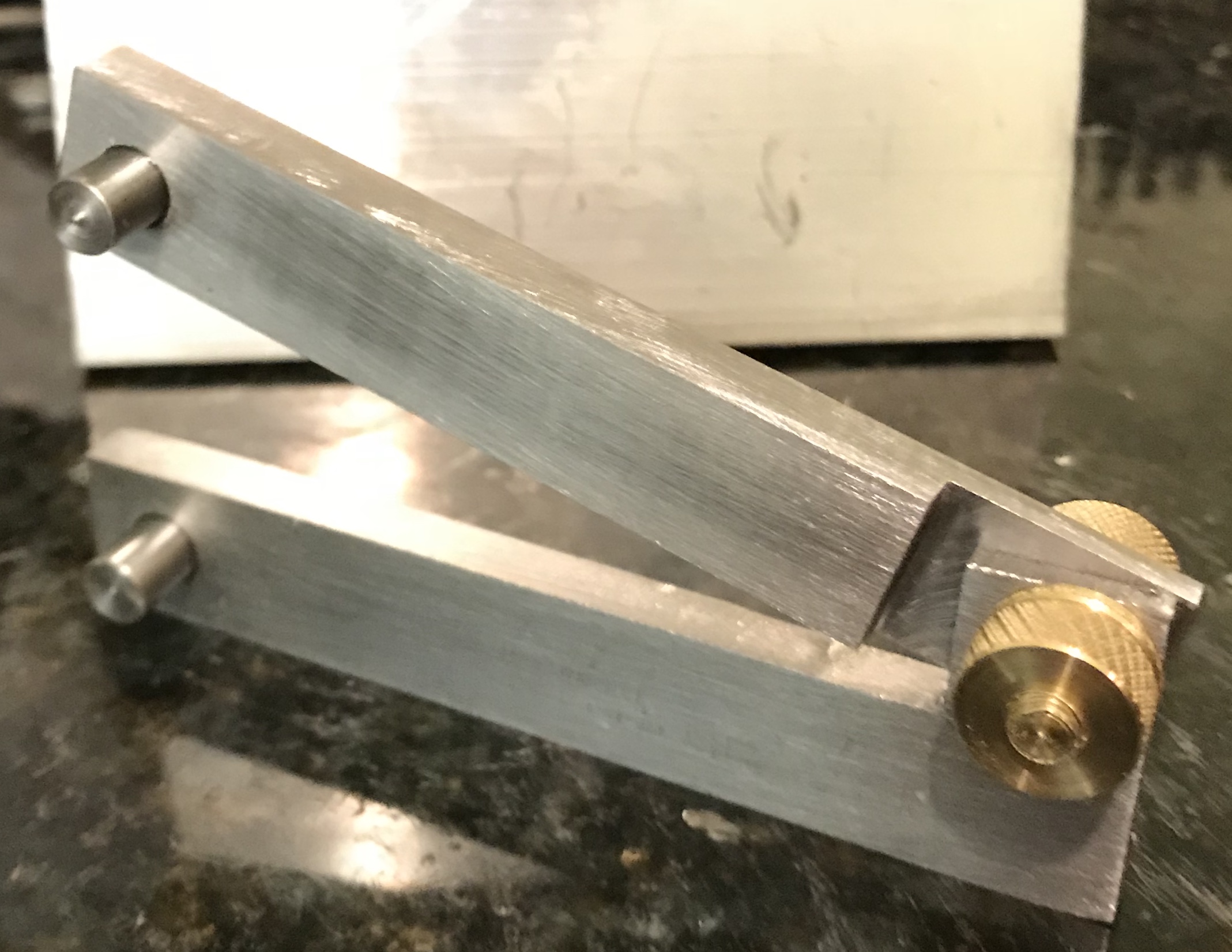Decided to make the protractor described by Marv Klotz in the "Protractor" calculation tool. It should be useful for cutting the angles in the Dodecahedron Little Free Library. I will make it about 3.5" long with 1/4 X 5/8 steel stock. The "L" was cut out with a hacksaw from 1.5" hot rolled steel bar stock. This was placed on parallels in the mill and the inside of the long leg was cut with a 3/8" end mill. As usual this was quite a challenge, but was better than the intermittent cutting with the two insert cutter. After cutting this side the part was flipped over in the vise and the outside of the long leg was cut in the same fashion in order to give two parallel sides. The final width was 0.570". This part was then cleaned up on both ends with the side of the 3/8" end mill and then the faces of the part were cleaned up with the 2 insert cutter.
The straight leg was cut from 1/4 X 5/8 cold rolled steel stock and only the ends and the sides were trimmed with the end mill. The part was reduced from 5/8 to 0.570". The lap joint for this part was cut 0.125 deep and about 5/8" long. The corresponding lap joint on the "L" leg was cut 0.125" deep across the short leg and about halfway into the long leg. The lap joints were cut with the two insert cutter. Cutting the lap larger than the actual joint provides room for the joint to rotate.

The hinge hole was marked 1/4" from the end of the straight leg and centered. The legs were clamped together and the distal holes were marked 3" from the hinge hole and centered in their respective legs. All holes were punched. The clamped legs were clamped to the top of the vise with a strap clamp on a plate of aluminum scrap. The punch mark was centered under a center drill and centered drilled, drilled with a "C" drill and reamed with a 0.250" reamer. The final hole is actually 0.254" in diameter!!
A 2" length of 1/2" brass rod was held in the trhee jaw chuck, faced, and reduced to 0.45". 5/8" was further reduced to 0.254" to fit the holes in the two legs of the protractor. All but 0.200" was reduced to 0.190". The end was chamfered and a groove was cut at the end of the narrow section for thread relief. A 10-32 die was used to thread the end of this bolt. The wide edge was chamfered and this wide part was knurled. The bolt was parted off. (The new end was chamfered prior to complete parting.)
A further 1/4" of the rod was cleaned up and the end faced. The rod was center drilled, drilled with a #22 drill (the #21 drill was dull) and tapped 10-32. The end was chamfered and then knurled. A 1/4" length was parted off. The nut was unable to completely tighten the two legs, so the rod still in the lathe was drilled with a 7/32" through drill and a 0.075" length was parted off. The hole was chamfered on both sides of this washer. This did a good job of holding the legs tightly in any position.

A leg was placed in the vise on the mill. A punch mark was carefully aligned with the center drill and the leg was center drilled, drilled through with a #25 drill, drilled with a "C" drill, and reamed with a 1/4" reamer. This process was repeated for the other leg. The resulting holes were lightly chamfered on both sides.

The final step was installing the pins. A 1.5" length of 1/4" drill rod was cut off with the hacksaw and placed in the lathe. It was faced, chamfered and the cutoff tool made a groove about 0.050 deep at 0.500". The new end was chamfered and the parting was completed. This was repeated for a second 1/2" long pin. The pins were a sliding fit in the reamed holes, so loctite was used to secure both pins in place. A photo of the completed protractor—sine bar hybrid is shown below.
